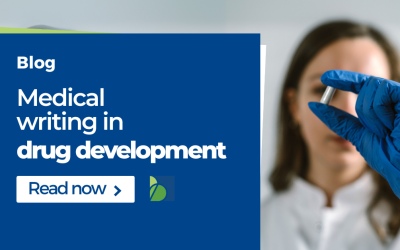In the process of marketing authorization, competent authorities classify medicinal products as the subject or not-subject to medical prescription. However, the classification of medicinal products can be reevaluated and changed via a regulated procedure. When considering a switch, many factors like characteristics of market and population, local policies, advertising, confidence in regulatory authorities and other, influence the outcome. Though, the safety of patients has the highest priority. So, what questions regarding patient safety should you ask?
Is the safety profile of my product acceptable?
Before every switch, a thorough safety assessment must be performed to justify the use of the product without medical supervision. Even the correct use of medicinal products can potentially harm patients. Therefore, it is important to acknowledge if your product has a low toxicity profile, low risk of serious adverse reactions in the general population, no interactions with commonly used medicines and low risk for resistance development. Additionally, you should consider if treatment with your product might potentially hide an underlying condition requiring medical attention.
Is there a potential for misuse?
Evaluation of the potential and consequences of misuse normally have to be completed as a part of safety assessment. The risk to patients health might arise if the product is not used according to the indication, is used for too long and if patients exceed the recommended dose or fail to consider drug interactions, warnings or contraindications.
“The safety of patients has the highest priority.“
If the off-label use of the medicinal product is known, a switch is not considered. Misuse of an OTC medicinal product could warrant reversal of the switch or reclassification to prescription-only.
Could patients handle the medicinal product and self-diagnose easily?
The pharmaceutical form must be easy to administer. Certain routes of administration such as parenteral have additional risks, therefore these products are normally subject to a medical prescription. Specific diseases have a wide range of common symptoms, which makes self-diagnosis difficult if not impossible. Not only patients should be capable of identifying the intended condition and appropriate information sources, but they should also be aware of the natural course of the disease, the duration of symptoms and their reoccurrence and potential consequences.
[ngg src=”galleries” ids=”19″ display=”basic_thumbnail” override_thumbnail_settings=”1″ thumbnail_width=”950″ thumbnail_height=”950″ thumbnail_crop=”0″]
Does my product have sufficient post-marketing experience?
If the authorities discover new medical findings, which was not known previously, the switch can be reversed. This risk is particularly high with products that have limited post-marketing experience, which demonstrates the safety of your product, especially in the case of product usage without the exclusion of certain groups of patients. So, in what cases are the new investigations most likely warranted?
“If the authorities discover new medical findings, which was not known previously, the switch can be reversed.”
The activity and safety of the medicinal product might need further investigations when: it was only recently authorized, the use of the product is limited, the medicinal product will be available in new strength, at a new dose, in the new route of administration, for the new group of age or for a new indication.
Is the written information supplied with the medicine adequate?
Patients tend to underestimate the risks of the treatment with OTC medicinal products. Therefore, the quality of the written information accompanying medicinal products is essential for patient safety and effective use of medicine. This information should be sufficient to substitute for the absence of medical supervision. Thus, product information should present clearly and prominently all the relevant aspects of use, contraindications, drug interactions, warnings and precautions, adverse reactions and recommendations for appropriate actions.
In conclusion, the principal factor driving the Rx to OTC switch is the safety of the medicinal product, as described by regulatory authorities. This attitude is quite conservative but serves well for assessing the suitability of the medicinal product to be reclassified in Europe. While the regulatory aspects of Rx to OTC switch are clearly defined, it is necessary to remember that many other features affect the outcome significantly. Therefore, don’t forget to research the intended market, population, competitors, local policies, possibilities for advertisement and other variables.
If you want to get more specified information, adjusted to your project and specific needs, contact us!
Egle Deimantaviciute, MSc
Medical Writer
Biomapas
References:
- Directive 2001/83/EC of the European Parliament and of the Council.
- European Commission‘s Guideline on Changing the Classification for the Supply of a Medicinal Product for Human Use.
- German Medicines Manufacturers’ Association. From prescription-only to pharmacy-only.











